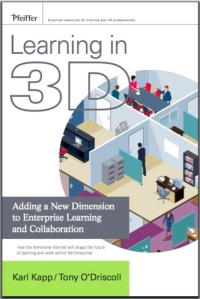
It is perhaps a statement of the obvious, but worth emphasizing, that the forms or structures of the immediate world we inhabit are overwhelmingly the outcome of human design. They are not inevitable or immutable and are open to examination and discussion. (p.5)
I’m reading John Heskett’s excellent Design: A Very Short Introduction at the moment. As regular readers will know, I’m very interested in infographics and visualizations; with a background in Philosophy and History I’m also interested in design at a more fundamental and basic level.
As with all well-explained and written books, the author ruminates on things that range across various disciplines. From the opening quotation, Heskett continues:
Whether executed well or badly (on whatever basis this is judged,) designs are not determined by technological processes, social structures, or economic systems, or any other objective source. They result from the decisions and choices of human beings. (p.5)
There’s actually some leadership lessons in there, with more throughout the book. For example, Heskett explains how the French initially became renowned for design:
In the early seventeenth century, the French monarchy used privileged status and luxurious facilities to attract the finest craftsmen to Paris in order to establish international dominance in the production and trade of luxury goods. Laws were introduced to promote exports and restrict imports. (p.16, my emphasis)
Heskett later explains how it’s difficult to be innovative and creative in large organizations because of the levels of bureaucracy involved:
Tacit, subjective approaches may be appropriate for small-scale products… In contrast with large-scale products involving complex questions of technology and the organization of interactions on many levels, personal intuition is unlikely to be capable of handling all necessary aspects. In such projects, rational, structured methodologies can ensure the full dimensions of projects are understood as a platform for creative solutions on the level of detailed execution.
 Heskett gives the example of the well-known (and expensive) Aeron chair by Herman Miller. This not only involves creative flair, but technical and ergonomic research and synthesis beyond the level of the individual.
Heskett gives the example of the well-known (and expensive) Aeron chair by Herman Miller. This not only involves creative flair, but technical and ergonomic research and synthesis beyond the level of the individual.
I’ve not finished Design: A Very Short Introduction yet, but (as with the others in the series) at £5 it’s an absolute steal. To summarize, the 3 leadership lessons I’ve learned from it already:
- Almost everything is the product of deliberate human interaction, thought and planning.
- Rewarding and/or legislating for behaviours and outputs you want is a fast track to success.
- Bureaucracy is a necessary evil in large organizations – but you can use it to your advantage through agile processes and effective project management.
I’ll post again when I’ve finished if there’s anything else that strikes me. Recommended! 😀







